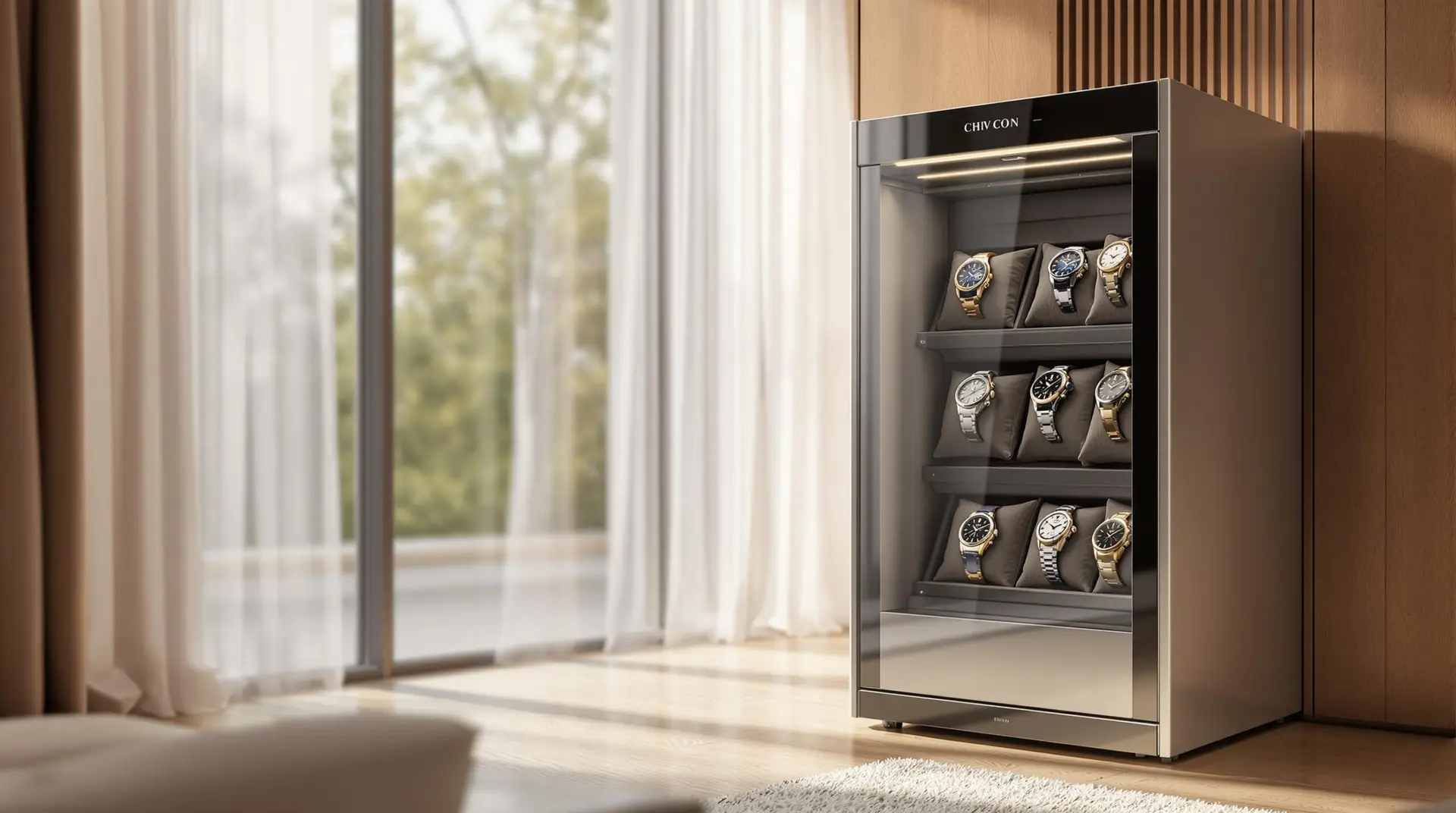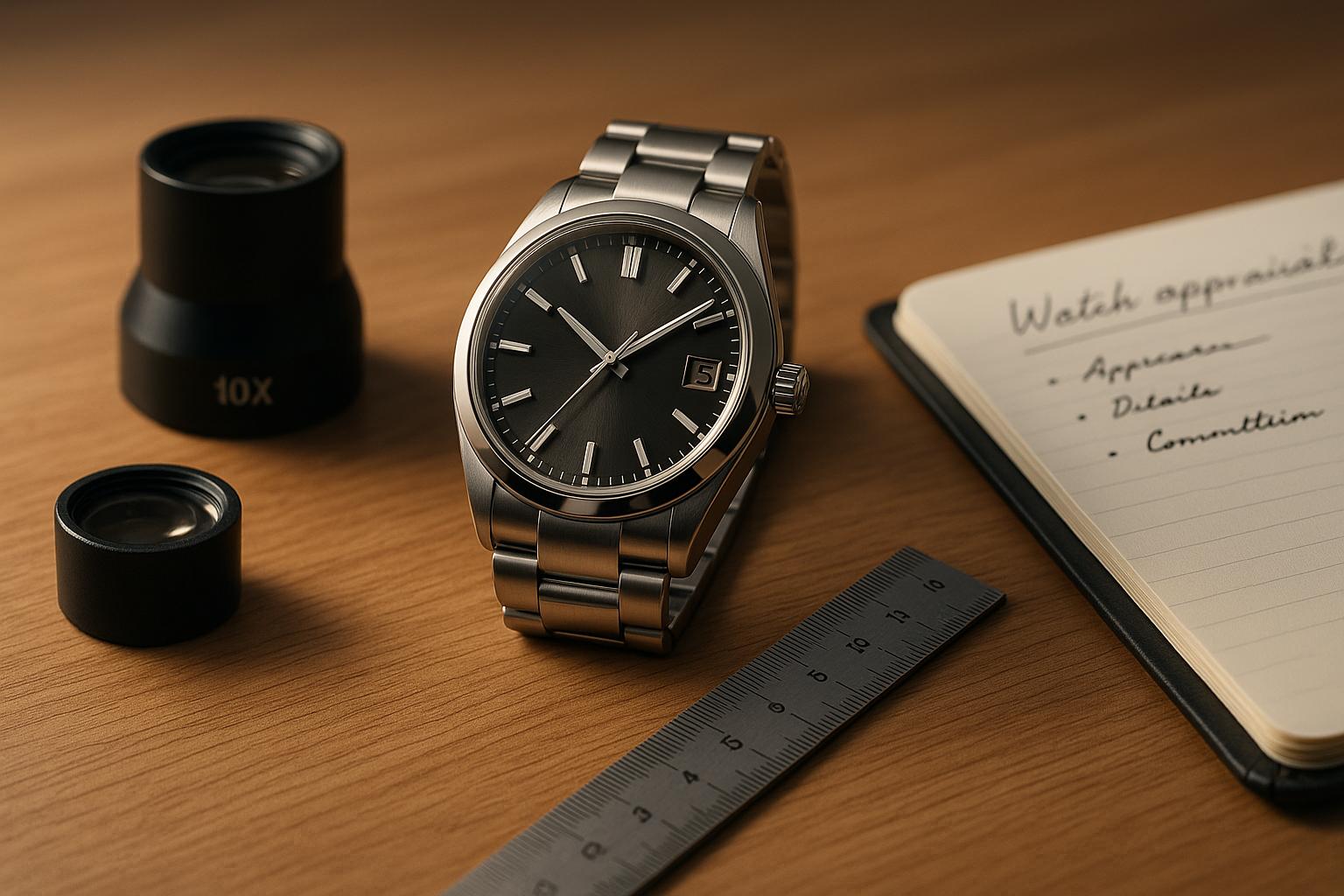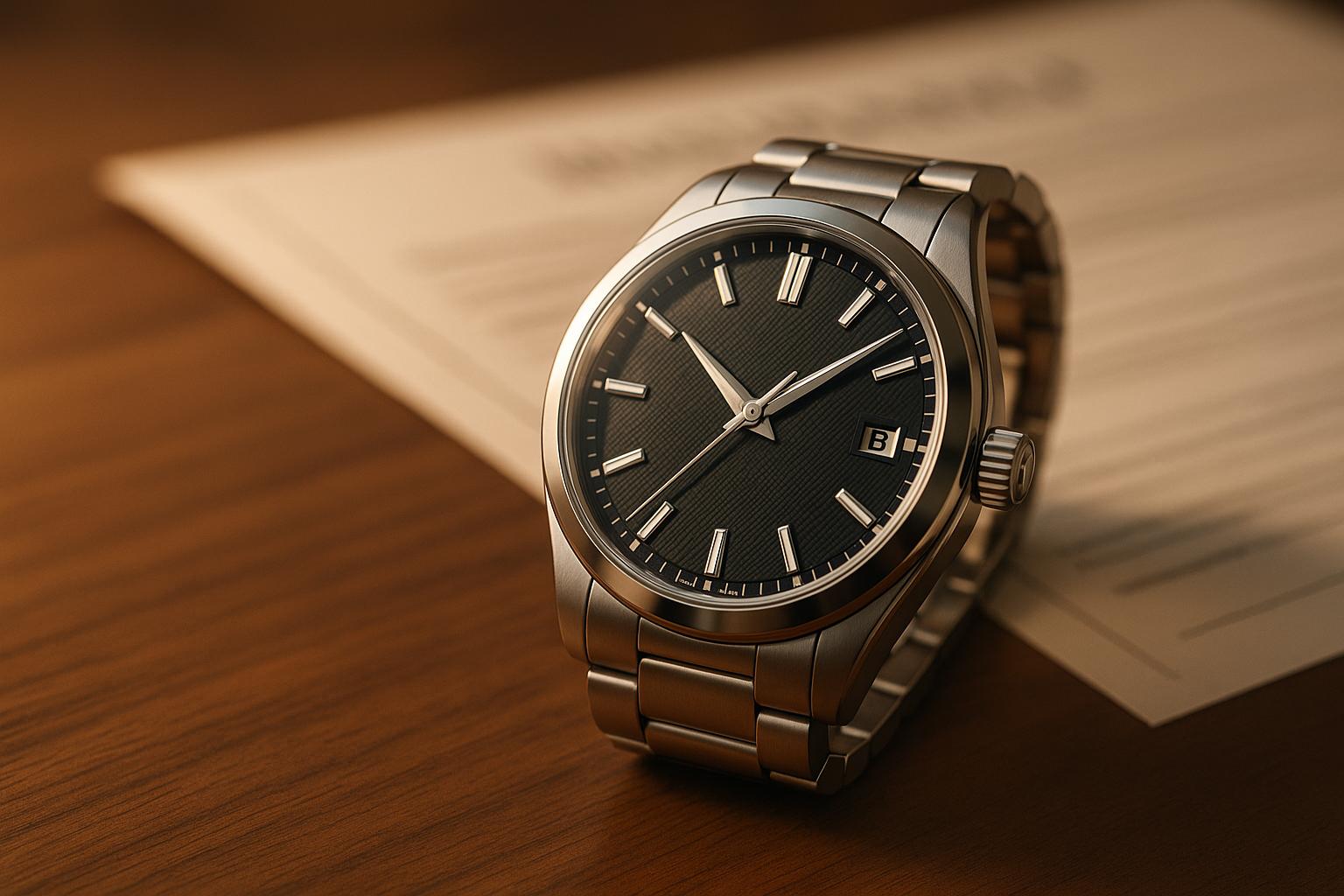Want to protect your luxury watches from damage? Here’s how: Proper storage is essential to maintain their value, performance, and appearance. Climate-controlled storage prevents issues like rust, condensation, and material wear caused by fluctuating temperature and humidity.
Key Takeaways:
- Ideal Conditions: Maintain 15-20°C (60-70°F) and 40-50% humidity.
- Tools You Need: Dehumidifiers, hygrometers, silica gel packets, and temperature controls.
- Storage Options: Choose from climate-controlled safes, watch winder cabinets, or adjustable storage rooms.
- Prevent Common Mistakes: Avoid direct sunlight, extreme temperature shifts, and high humidity.
By following these steps, you’ll extend your watches’ lifespan and preserve their value. Read on for detailed tips and solutions to common storage challenges.
How To Store Your Rolex Watches

Watch Climate Control Basics
Understanding the environmental factors that affect watch preservation is key before setting up storage. Even small changes in conditions can harm luxury watches over time, making climate control a priority.
Best Temperature and Humidity Levels
Keeping a stable environment – between 15°C and 20°C with humidity levels of 40% to 50% – is crucial for safeguarding luxury watches. Swiss Gold Safe emphasizes that maintaining these conditions is "vitally important for preserving the value of these investment products" [4].
| Factor | Optimal Range | Risks of Non-Compliance |
|---|---|---|
| Temperature | 15-20°C | Mechanical stress, material damage |
| Humidity | 40-50% | Rust, mold, corrosion |
| Air Quality | Clean, filtered | Contamination, material wear |
While these conditions protect your watches, knowing what to avoid is just as important.
Storage Mistakes to Avoid
Certain storage errors can lead to costly damage:
- Exposure to Sunlight and Temperature Swings: Direct UV rays can fade dials and weaken case materials, while placing watches near air conditioning vents or heating units causes mechanical stress [1][3].
- Humidity and Poor Air Quality: High moisture levels can result in rust or corrosion, while unfiltered air introduces dust and debris into the watch mechanisms [3]. Swiss Gold Safe also notes that improper humidity can lead to mold growth on leather straps [4].
Taking preventive steps now can save you from expensive repairs later.
Building Your Storage System
Creating a system to protect your timepieces from damage caused by environmental factors requires careful planning and the right tools. This ensures your watches retain their value and function properly.
Storage Solutions and Tools
Choosing the right storage option is the first step to safeguarding your collection:
| Storage Type | Features | Best For |
|---|---|---|
| Climate-Controlled Safe | Combines security and climate management | High-value collections |
| Watch Winder Cabinet | Maintains movement and basic climate control | Automatic watches |
| Storage Room | Adjustable environment with large capacity | Professional collectors |
Once you’ve selected your storage solution, it’s crucial to have the right tools in place. Key equipment includes:
- Dehumidifier: Helps manage moisture levels.
- Digital hygrometer: Tracks humidity with precision.
- Temperature control system: Keeps the environment stable.
- Silica gel packets: Provides extra moisture protection.
These tools work together to create a safe environment for your watches, minimizing risks caused by temperature and humidity fluctuations [5].
System Monitoring
After setting up your storage, consistent monitoring is critical to maintain the desired conditions. Use digital monitors to continuously track temperature and humidity, placing sensors in different areas of your storage space to catch any discrepancies [1].
To ensure everything runs smoothly:
- Daily: Check temperature and humidity levels.
- Monthly: Inspect all equipment.
- Quarterly: Review system performance, replace filters, or upgrade tools if needed.
This routine helps you spot and fix problems early, protecting your watches from potential damage.
sbb-itb-fcc00bb
Storage Maintenance Steps
To keep your storage system working effectively and protecting your watches, regular maintenance is a must.
Pre-Storage Watch Care
Cleaning your watches before storage helps prevent residue buildup and ensures they stay in good condition. Use a soft, damp cloth to gently wipe the watch, focusing on hidden areas where dirt often collects.
| Area | Cleaning Method | Special Considerations |
|---|---|---|
| Case and Bracelet | Use a microfiber cloth and brush to remove oils and debris | Pay attention to debris between links |
| Crystal | Apply a watch-specific cleaner | Avoid using harsh chemicals |
| Crown Area | Clean with a detail brush | Remove any trapped particles |
If your watch has been exposed to extreme conditions or is due for servicing, consider professional maintenance before storing it for an extended period [2].
After cleaning, organizing your watches properly within the storage system is key to keeping them safe over time.
Storage Layout Tips
To avoid scratches and ensure proper airflow, separate your watches. Keep these principles in mind when arranging your collection:
- Spacing: Leave at least 1 inch between watches.
- Orientation: Store watches flat or with the crown slightly elevated.
- Protection: Use individual watch pouches or boxes for added safety.
Make sure not to overcrowd your storage space. This helps maintain consistent temperature and humidity levels, which are critical for preserving your timepieces [2][6].
Even with a well-organized setup, ongoing monitoring is crucial to keep your storage environment in top shape.
Regular Checks
Regularly inspect both your watches and the storage system to catch potential issues early.
| Check Items | Actions Required |
|---|---|
| Watch Condition | Look for signs of moisture or unusual marks |
| Equipment Function | Test dehumidifiers and replace silica gel packets |
| System Performance | Schedule professional maintenance and replace filters |
Leather straps deserve extra attention during inspections, as they are particularly vulnerable to damage from environmental factors [2][3].
"Regular maintenance and inspection of climate-controlled storage systems are essential to ensure optimal functionality and prevent damage to stored timepieces." [4]
Fixing Common Problems
Even with a well-designed setup, climate-controlled watch storage systems can run into issues. Here’s how to tackle some of the most frequent problems and ensure your timepieces remain protected.
Humidity Control Issues
Fluctuating humidity levels can harm luxury watches. If the readings stray from the recommended range, here’s what you can do:
| Problem | Solution |
|---|---|
| High Humidity | Use a dehumidifier, set up humidity alerts, replace saturated silica gel. |
| Low Humidity | Add a humidifier, include moisture-regulating materials, calibrate equipment. |
| Inconsistent Readings | Inspect the seal’s condition, recalibrate the hygrometer, perform regular maintenance. |
Keeping humidity under control is key, but don’t overlook temperature regulation, which is just as important for protecting your watches.
Temperature Problems
The ideal temperature for storing watches is between 15-20°C (60-70°F). Here’s how to address common temperature-related concerns:
| Temperature Issue | Solution |
|---|---|
| Temperature Extremes | Move storage away from heat sources, install thermal insulation. |
| Sudden Temperature Shifts | Add thermal mass to the storage system to stabilize changes. |
Midgard’s storage facilities use advanced thermal regulation to maintain temperature variations within ±1°C [1]. However, even with steady temperature and humidity, moisture can still sneak in and damage your collection.
Moisture Prevention
Spotting and addressing moisture problems early can save your watches from damage. Here’s how to handle potential warning signs:
| Warning Sign | Immediate Action | Long-term Solution |
|---|---|---|
| Condensation on Crystal | Remove the watch, dry the storage area. | Improve the ventilation system. |
| Musty Odors | Inspect for mold, clean thoroughly. | Add moisture barriers. |
| Water Spots | Check and replace seals if needed. | Upgrade to professional-grade storage. |
If moisture problems persist, consider investing in specialized storage solutions like those from Brimich, which include built-in moisture detection and prevention systems [3].
Conclusion
Storage Benefits
Storing luxury watches in a climate-controlled environment helps prevent issues like moisture damage, mechanical wear, and material breakdown. This setup offers better protection than standard storage methods by maintaining a sealed and stable space, shielding your collection from dust and preserving its condition.
Next Steps
To start protecting your watches effectively, consider these steps:
- Use tools to check and manage the temperature and humidity in your storage area.
- Invest in a climate-controlled storage solution designed specifically for your collection.
- Regularly monitor and adjust the conditions to maintain optimal storage.
For more tips on maintaining and protecting your watches, Chronoexpert provides resources on topics like water resistance testing and professional insurance options.
"By storing your watches properly, you’re not only safeguarding their appearance but also extending their lifespan." [6]


